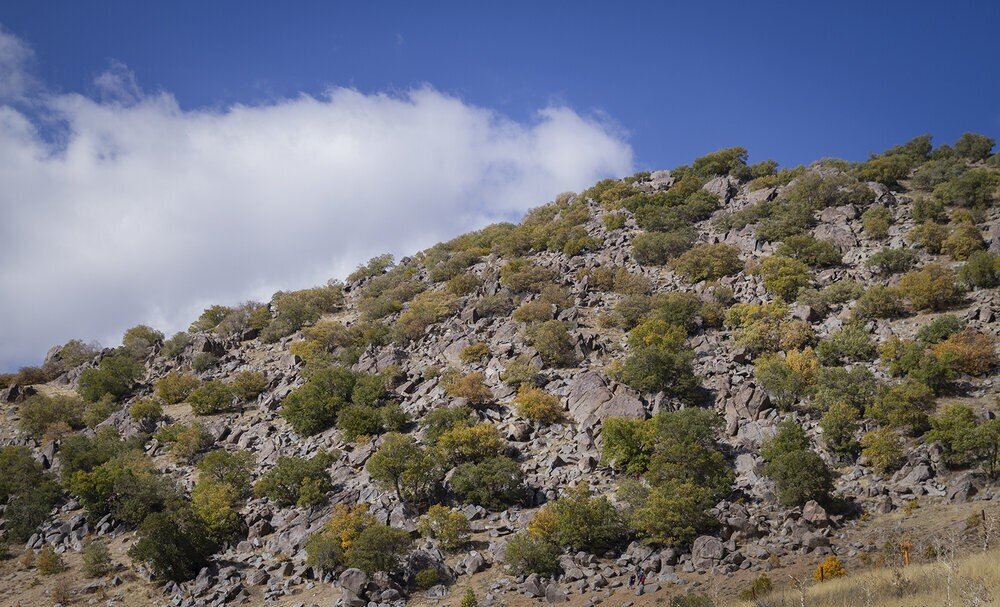Some $500,000 earmarked for Zagros Forest pest control

TEHRAN – Some 260 billion rials (about $500,000) has been allocated for implementing pest management plans in Zagros Forest.
Zagros Forest is among the most important natural resources of Iran, as it constitutes 40 percent of the country's jungles, and plays an important role in the production of a large part of the country’s freshwater.
One of the major problems affecting Zagros Forest is pests and diseases. The pests are naturally a part of the Zagros ecosystem and are not considered a disease by themselves, but when they disrupt the biological balance, they become a problem.
Oak trees are one of the most important hosts of pests and insects in Zagros Forest. In Iran's oak forests, there are two key pests, leaf-eaters, and oak bud-eaters, which get their food from the leaves and buds of oak trees.
These pests that broke out in the forests of Zagros during the past years, especially the previous year, were native pests of the region, ISNA reported.
A community forestry plan has been prepared with the aim of saving the endangered Zagros Forest, Naghi Shabanian, the deputy head of the Natural Resources and Watershed Management Organization, has said.
Social forestry refers to using trees and/or tree planting specifically to pursue social objectives, usually the betterment of the poor, through the delivery of the benefits of trees and/or tree planting to local people.
Community forestry, a form of social forestry, refers to tree-planting activities undertaken by a community on communal lands or the so-called common lands; it is based on local people's direct participation in the process, either by growing trees themselves or by processing the tree products.
The plan will start in the second half of the next Iranian calendar year which starts on March 21, 2023, Shabanian added.
One of the major problems in these forests is the drying up of oak trees and a fungal disease that has infected these trees. The main cause of this disease is the droughts that have occurred in recent years.
The areas that were involved in this problem have been partially controlled by watershed management and forestry operations, but seeding and rehabilitation operations are required.
Zagros Forest steppe ecoregion with an area of about 6 million hectares (3.5 percent of Iran) is located primarily in Iran, ranging from northwest to southeast and roughly paralleling the country's western border. The forest constitutes 40 percent of the country’s forested area. The forest has also been called the western oak forest due to the dominance of oak species.
The plan will be piloted this year in three provinces, the official said, adding that people will carry out the plan under the supervision of the Natural Resources and Watershed Management Organization.
Elsewhere in his remarks, Shabanian said that one billion saplings are projected to be planted across the country by 2026.
Iran is a vast country with a wide range of biodiversity and natural resources, with 13 biosphere reserves named Golestan, Miankaleh, Arasbaran, Urmia, Arjan and Parishan, Geno, Hara, Hamoon, Dena, Tange Sayad, Sabzkooh, Turan, Kavir and Kopet Dagh has been registered in the UNESCO Man and the Biosphere (MAB) Program, he explained.
Biosphere reserves include terrestrial, marine, and coastal ecosystems. Each site promotes solutions reconciling the conservation of biodiversity with its sustainable use. There are currently 714 biosphere reserves in 129 countries, including 21 transboundary sites.
The Golestan Biosphere Reserve is located in the north of Iran and forms part of the Caucaso-Iranian highlands, situated between the sub-humid and semi-arid Caspian regions.
A wide variety of habitats and rich biodiversity can be found in the reserve, including 150 bird species, 54 species of reptiles and amphibians, 8 species of huge carnivores such as the leopard and brown bear, and more than 1,366 plant species.
Dena Biosphere Reserve is located in the Central Zagros Mountains of Iran, with a general slope of more than 60 percent. Dena is also home to a vast range of plant species and several endangered and endemic mammal species. Oak species dominate the highlands, while pistachio and almond are common at lower elevations.
MG
Leave a Comment